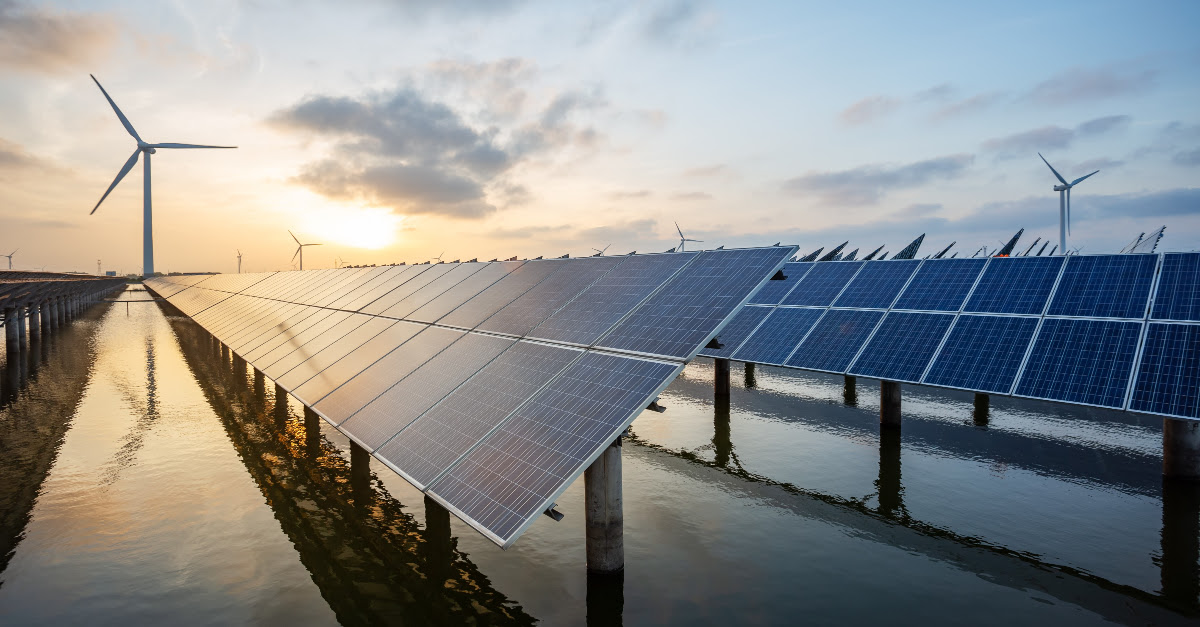A new report on the role of development finance institutions (DFIs) in financing renewable energy transitions in southern African countries facing debt distress has released today at the Development Finance Resource Centre CEOs Forum in Gaborone, Botswana.
The report is co-authored by the Southern Africa Development Community Centre for Renewable Energy and Energy Efficiency, the University of Pretoria Centre for Human Rights and the Boston University Global Development Policy Center.
The report summarizes three virtual workshops held between June-October 2021 with international experts in energy, finance and development. The study builds on a November 2020 report that sketched a roadmap for how the Southern African Development Community (SADC) region could expand the use of renewable energy to increase energy access and spur economic development.
The 2020 report projected SADC countries could attain full energy access and 53 percent renewable energy installed capacity by 2040 with ambitious energy targets and support from regional and global DFIs.
However, there is increasing concern that SADC countries have become economically vulnerable and increasingly unable to take on more external debt due to the ongoing constraints of the COVID-19 pandemic.
How can DFIs support SADC countries with installing renewable energy amid growing debt distress and an ongoing global pandemic?
Key findings:
- Lockdowns associated with the pandemic disrupted SADC’s energy sector across the entire electricity value chain, from the utility level to the national and regional levels, with the greatest impact falling on RE capacity development. RE projects could not fully benefit from policy initiatives designed to stimulate private sector engagement and RE project development and implementation slowed overall.
- The pandemic changed the way financiers view the risks associated with projects by affecting the sovereign and corporate debt landscape in SADC countries and complicating the risk-assessment process. If the debt issue is not addressed, credit and currency risks, among others, will likely drive up the cost of capital, affecting long term returns and eventually undermining private sector investment.
- DFIs are well-placed to both mobilize and catalyze private resources by supporting mechanisms that enhance the enabling environment to better leverage private investment.
Key recommendations:
- The first section of the report on the impact of COVID-19 on SADC’s energy sector argues for (a) introducing fiscal incentives to support renewable energy development and (b) promoting more active private sector participation through enabling regulatory frameworks that would include redesigning market structures, strengthening regional integration, accelerating adoption of smart grids, developing more innovative financing models and shifting to more cost-based tariffs.
- The second section on the challenges and opportunities of SADC’s debt conundrum highlights the need for (a) adequate project risk management, (b) further investigations into whether the COVID-19 pandemic had affected bankability and, if so, the extent to which it had done so, (c) creative financing mechanisms and means by which the private sector could supplement gaps in official financing and (d) project design that promotes transparency, accountability and inclusiveness.
- The third section on the role of DFIs in financing renewable energy in the COVID-19 era recommends (a) maximizing debt financing instruments, (b) increasing the role of DFIs in mobilizing and catalyzing private sector resources, (c) pre-investment support to ensure project bankability, (d) local financing options, (e) cooperation and collaboration among DFIs, (f) investing in small-scale renewable energy projects and (g) prioritizing regional project surveillance and monitoring.
The bottom line:
- Access to clean, reliable and affordable electricity in SADC countries is critical for socio-economic growth and development. This will require the pooling of technical and financial resources to address massive investment gaps, particularly during a period of debt distress. But it is also an opportunity to explore innovative approaches to financing and de-risking projects and to improve their overall contributions towards economic development—for which DFIs are well suited.
Author insights
Kevin P. Gallagher, Director, Boston University Global Development Policy Center; Professor, Global Development Policy, Boston University, said: “This report shows that southern African countries face severe resource mobilization constraints and that development finance institutions, especially from the West, have a key role and responsibility to help ensure a green and inclusive recovery in the SADC region.”
Magalie Masamba, Global China Post-doctoral Research Fellow, Boston University Global Development Policy Center; Post-doctoral Fellow, University of Pretoria Centre for Human Right said: “Unsustainable debt is a growing issue across Africa. SADC countries have been forced to take on new public debt to deal with the COVID-19 pandemic, which has had significant debt repercussions and has undoubtedly shrunk the region’s fiscal space. To achieve a just energy transition in the region, the private sector and development finance institutions will have to play a greater role in terms of both finance and technical assistance.”
Eugenia Masvikeni, Renewable Energy Expert, Southern African Development Community Centre for Renewable Energy and Energy Efficiency noted: “Demand for electricity in the Southern African Power Pool member countries has gradually been returning to pre-pandemic levels, driving renewable energy projects back in line with the region’s medium- to long-term development pathway.
However, creative thinking, innovative funding models and enabling policy are required to minimize the impact of the pandemic on deployment of renewable energy technologies in southern Africa. There is still optimism that the projected 53 percent contribution from renewable energy generation is achievable by 2040 in the regional power system that is still dominated by fossil fuels.”
- Read the report – available in English and Portuguese
- Read the summary blog
African Eye Report



